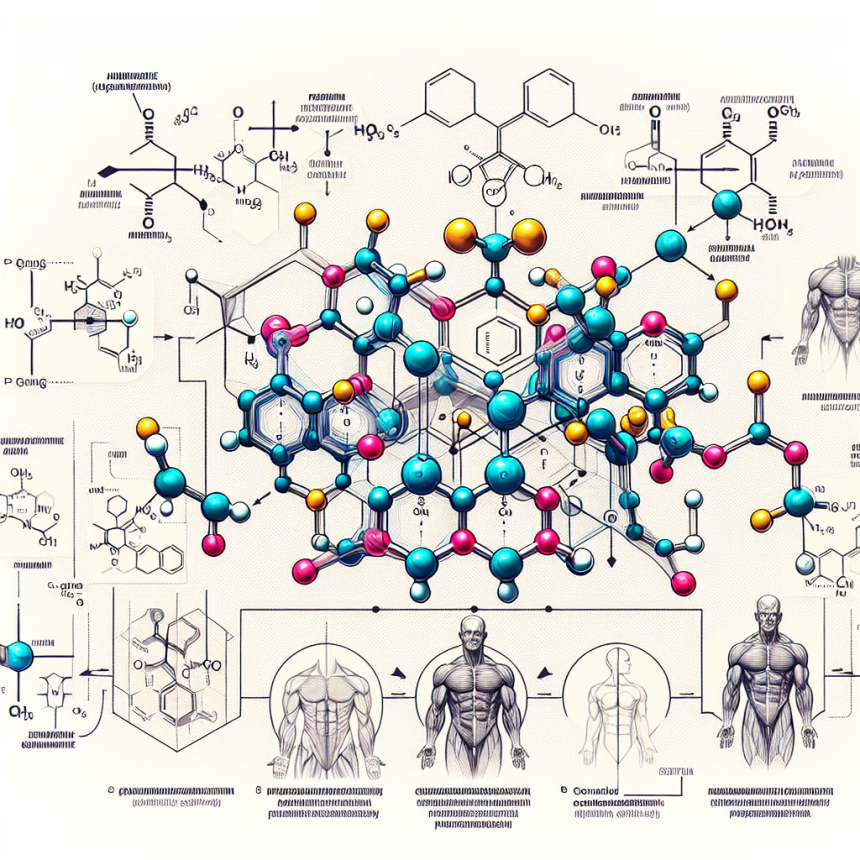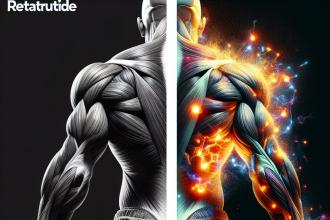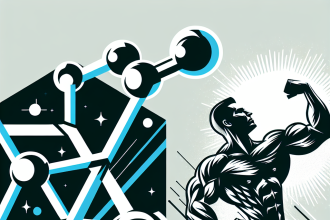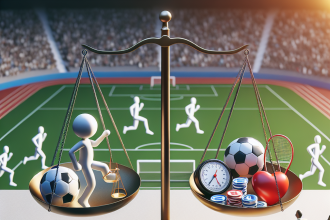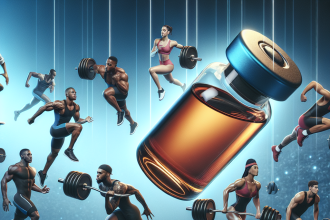-
Table of Contents
Nandrolone Phenylpropionate: Mechanisms and Implications for Athletes
Nandrolone phenylpropionate (NPP) is a synthetic anabolic androgenic steroid (AAS) that has gained popularity among athletes for its ability to enhance muscle growth and performance. It is a modified form of the hormone testosterone, with a phenylpropionate ester attached to it, which allows for a slower release into the body compared to other forms of nandrolone. This article will explore the mechanisms of action of NPP and its implications for athletes, as well as provide expert opinions and real-world examples.
Pharmacokinetics and Pharmacodynamics
NPP is administered via intramuscular injection and has a half-life of approximately 4.5 days (Kicman, 2008). This means that it remains active in the body for a longer period of time compared to other AAS, such as testosterone propionate, which has a half-life of only 1-2 days. This slower release allows for less frequent injections, making it a more convenient option for athletes.
Once injected, NPP is converted into its active form, nandrolone, which binds to androgen receptors in various tissues, including muscle, bone, and the central nervous system (Kicman, 2008). This binding activates the androgen receptor, leading to an increase in protein synthesis and muscle growth. NPP also has a high affinity for the progesterone receptor, which can lead to side effects such as gynecomastia (enlargement of breast tissue) and water retention (Kicman, 2008).
In addition to its anabolic effects, NPP also has androgenic properties, which can contribute to the development of male characteristics, such as increased body hair and a deeper voice. However, compared to testosterone, NPP has a lower androgenic potency, making it a more favorable option for female athletes (Kicman, 2008).
Performance Enhancement
The use of NPP by athletes is primarily for its ability to enhance muscle growth and strength. Studies have shown that AAS, including NPP, can increase muscle mass and strength by up to 20% (Kicman, 2008). This is achieved through the stimulation of protein synthesis and the inhibition of protein breakdown, leading to a positive nitrogen balance in the body (Kicman, 2008).
NPP has also been shown to improve athletic performance by increasing red blood cell production, which can improve oxygen delivery to muscles and delay fatigue (Kicman, 2008). This can be especially beneficial for endurance athletes, such as cyclists and long-distance runners.
Furthermore, NPP has been reported to have a positive effect on recovery time, allowing athletes to train more frequently and intensely (Kicman, 2008). This can lead to faster gains in muscle mass and strength, making it an attractive option for athletes looking to improve their performance.
Side Effects and Risks
Like all AAS, the use of NPP comes with potential side effects and risks. These include but are not limited to acne, hair loss, liver damage, and cardiovascular complications (Kicman, 2008). The risk of side effects is dose-dependent, meaning that the higher the dose, the greater the risk. Therefore, it is important for athletes to use NPP responsibly and under the supervision of a healthcare professional.
One of the most concerning side effects of NPP is its potential to suppress the body’s natural production of testosterone. This can lead to a decrease in sperm production, testicular atrophy, and even infertility (Kicman, 2008). To mitigate this risk, it is recommended to use NPP in combination with testosterone, as well as to undergo post-cycle therapy to help restore natural testosterone production.
Real-World Examples
The use of NPP by athletes has been well-documented in the media, with several high-profile cases of athletes testing positive for the substance. In 2016, Russian weightlifter Aleksey Lovchev was stripped of his Olympic silver medal after testing positive for NPP (BBC, 2016). In 2019, American sprinter Christian Coleman was also suspended for three missed drug tests, one of which was due to a positive test for NPP (BBC, 2019).
These cases serve as a reminder of the potential consequences of using NPP and other AAS in sports. Not only can it result in disqualification and loss of medals, but it can also have long-term health implications for athletes.
Expert Opinion
According to Dr. Mark Jenkins, a sports pharmacologist and professor at the University of British Columbia, the use of NPP by athletes is a growing concern. “NPP is a powerful AAS that can provide significant performance-enhancing effects, but it also comes with serious risks and side effects,” says Dr. Jenkins. “Athletes need to be aware of these risks and use NPP responsibly, under the guidance of a healthcare professional.”
Dr. Jenkins also emphasizes the importance of education and testing in the fight against doping in sports. “It is crucial for athletes to understand the potential consequences of using NPP and other AAS, and for anti-doping organizations to continue to implement rigorous testing protocols to catch those who choose to cheat,” he adds.
Conclusion
Nandrolone phenylpropionate is a synthetic AAS that has gained popularity among athletes for its ability to enhance muscle growth and performance. Its slow-release mechanism and anabolic properties make it an attractive option for athletes looking to improve their performance. However, the use of NPP also comes with potential risks and side effects, and it is important for athletes to use it responsibly and under the supervision of a healthcare professional. Education and testing are crucial in the fight against doping in sports, and it is up to athletes to make the right choices for their health and the integrity of their sport.
References
BBC. (2016). Rio Olympics 2016: Russian weightlifter Aleksey Lovchev stripped of silver medal. Retrieved from https://www.bbc.com/sport/olympics/37508150
BBC. (2019). Christian Coleman: World 100m champion provisionally suspended for missing drugs test. Retrieved from https://www.bbc.com/sport/athletics/50999796
Kicman, A. T. (2008). Pharmacology of anabolic steroids. British Journal of Pharmacology, 154(3), 502-521. doi: 10.1038/bjp.2008.165
